Friday, June 01, 2007
From: Eugene A. Brown, Durham City Council
Re: Questions concerning role of Durham Police Department in the Duke Lacrosse Case
Date: May 31, 2007
.
Based upon my analysis of the case and conversations with numerous attorneys, community leaders, reporters and police officers, I submit the following questions:
.
Overview
One basic question is why did three Durham residents have to go to Raleigh and to the Attorney General's office to get justice? What was in the collective DNA of some within the Durham Police Department (DPD) that denied the accused justice in our City? Who was really in charge of investigating this case, the Durham Police or the DA? Who was driving the train and who was stoking the coal in the fire engine to keep this hoax of an investigation going? What was the role of the Durham Police Department in creating what the Attorney General deemed a "rush to conviction" but apparently not to justice?
.
Although the relationship between a police department and the district attorney is often symbiotic, roles are generally defined as investigator and prosecutor, respectively. The relationship in this case seemed one-sided, with the District Attorney's office taking both roles. Is the relationship between the District Attorney and the DPD in this case typical of the approach used in most criminal cases in Durham?
.
Chain of Command
Who was in charge of our police department during this case? We know that for several months Chief Chalmers was attending his mother who was seriously ill. This is understandable, but it begs the question of who had oversight of this major national case? Deputy Chief Ron Hodge spoke to the press on several occasions; was he the "go to guy"? What about the lead investigator, Sgt. Mark Gottlieb? It is unclear who he was reporting to, Indeed, where is the evidence that he was actually in communication with the police leadership?
.
The Baker/Chalmers report states that the DPD was in control of and accountable for the investigation. Yet, on March 24, 2006, Sgt. Mark Gottlieb, DPD senior investigator, wrote that he conveyed to his boss, Captain Jeff Lamb, that Mike Nifong would be running the case. Lamb told Gottlieb to "go through Mr. Nifong for any directions on how to conduct matters in this case." How does one explain this difference? Who was correct? And is there any major evidence that the DPD challenged District Attorney, Mike Nifong, at any time throughout the life of this case?
.
The Lineup
How were three lacrosse players indicted with no physical evidence, no corroborative witnesses and numerous and conflicting stories from the "victim" about her alleged rape. The answer, unfortunately, appears to be primarily a tainted lineup.
.
The Baker/Chalmers report states that the reason for the special lineup was that "the witness had failed to identify her attackers from six previous suspect identification processes which were governed by G.O. 4077." Query: shouldn't that fact alone have been a red flag to police investigators concerning the credibility of the witness? In essence, are police admitting that they tried doing the lineup the right way six times with no positive results, so they had to change their procedure to get what they wanted?
.
Several other DPD procedures seem troubling. Doesn't the standard lineup policy call for an independent administrator to run it? This avoids any unintended influence from the primary investigator. Why was lead investigator Sgt. Mark Gottlieb running the lineup and did he assume the same role in the other six lineups? Who allowed this to happen and when Gottlieb went to the Grand Jury, did he acknowledge that the only identification he had was from the suspicious lineup that probably would not stand up in court? Did he or the DPD say anything to the Grand Jury about the conflicting stories of the alleged victim?
.
Throughout the country, the use of "fillers"—people who have no connection to the case—is common and standard practice. The argument advanced in the Baker/Chalmers report was that the police guidelines regarding the use of "fillers" didn't apply because DPD was using the identification procedure to find witnesses. This makes little sense when all the lacrosse players were considered suspects. In essence, one can argue that for Ms. Mangum this was like shooting fish in a barrel. Whoever she chose would and could be identified as a suspect.
.
In addition, the Baker/Chalmers argument that the April 4, 2006 "lineup" was for identification purposes only is also called into question by the unusual measures of preparation for the photo session. Why did Sgt. Gottlieb seek additional help from colleagues in implementing the April 4 lineup, when such assistance was not needed for earlier lineups? Why was the April 4 lineup videotaped when earlier lineups were not? Sgt. Gottlieb recently admitted that the April 4 lineup was videotaped to allow "potential jurors, defense attorneys, prosecutors and other judicial officials" to see how the procedure was conducted. If this is the case, how can the Baker/Chalmers report argue that there was never any intention to use the April 4 lineup as a suspect identification procedure?
.
Another question surrounding the photo lineup is why did the description Ms. Mangum made on March 16 of alleged attacker Finnerty, as reported by Sgt. Gottlieb's July written report of the identification procedure, directly contradict handwritten notes taken by Investigator Benjamin Himan during the same photo lineup procedure? Sgt. Gottlieb's report of Ms. Mangum's description of Finnerty was as follows: "W/M, young, blonde hair, baby faced, tall and lean," while Hirnan's notes report Mangum as describing her three attackers as "heavyset, dark. chubby or short." This stark contrast of descriptions creates uncertainty in either the accuser's credibility, or in the recording and reliability of accounts by police. Either way, there are unanswered questions surrounding the photo lineup procedure. Also, why did Sgt. Gottlieb, unlike Investigator Himan, wait several months to finally put his report on paper?
.
Exculpatory Evidence
The Baker/Chalmers report attempts to show that the DPD had a record of "seeking exculpatory statements and evidence", but why did DPD seem to accept axiomatically the validity of Mangum's story? Was there any proactive attempt on behalf of the DPD) to investigate her background or to check out her mental health?
.
DPD's evidence hunt seemed to be one-sided. Indeed, DPD spent an incredible amount of time, energy and money investigating the 46 members of the Duke Lacrosse team. Yet, according to the Attorney General's report, after 10 months of this case languishing with the DPD and District Attorney, it was the Attorney General's special prosecutors who first questioned the conflicting gang-rape stories of Crystal Gail Mangum. The result: "The state's case rested primarily on a witness whose recollections of the facts of the allegations were imprecise and contradictory."
.
After the City Council work session last week, Chief Chalmers spoke with the media about the case for the first time in nearly 13 months. He stated that there were no inconsistencies in Ms. Mangum's stories from March 14, 2007 until the police took the case to the Grand Jury in April. Many questioned his recollection of the facts. Indeed, the overall consensus is that the complainant gave at least six conflicting accounts of what transpired that night at 610 N. Buchanan Blvd. Even the DPD officer who first picked her up in front of Kroger's that morning was skeptical of her story. Her first concern was that she had been robbed, not raped and according to the officer, it appeared to be a business deal gone wrong. Duke Hospital officials also spoke of her changing story.
.
In DPD's search for evidence, why was Dr. Julie Manly, who conducted the medical exam of Ms. Mangum at Duke Hospital, not interviewed? Why did it take nearly a month for DPD to talk with John Shelton, the officer who first picked up Ms. Mangum at the Kroger's on Hillsboro Rd. and why was Officer Shelton's dubious belief in Ms. Mangum's story given no credence with the investigators?The Baker/Chalmers report attempts to accuse the lacrosse team members of not cooperating with the DPD. Yet, it fails to even mention the initial meeting with some of the players who gave testimony. Nor does it state that the DPD actually turned down an early offer from the Captains of the lacrosse team to voluntarily submit themselves to an SBI-administered polygraph test.
.
Wanted Poster
Before any indictments were issued, the DPD officially and repeatedly told the public that horrific crimes had been committed at the lacrosse party. In late March 2006, I, and many others, received an email "wanted poster" from Durham CrimeStoppers which stated: "The Duke Lacrosse Team solicited a local escort service for entertainment. The victim was paid to dance at the residence located at 610 N. Buchanan. The Duke Lacrosse Team was hosting a party at the residence. The victim was sodomized, raped, assaulted and robbed. This horrific crime sent shock waves throughout our community." The message later appeared, I believe, on the Trinity Park list serve and other media outlets as well. Several questions arise from this:
.
-Who authorized Officer Addison to create and distribute such a false and libelous posting and to personally appear on WRAL (March 24, 2006) and state: You are looking at one victim brutally raped." Since he was not an investigator on this case, how did he reach this fallacious conclusion? Who finally ordered the poster to be removed from the public arena?
.
-The poster states that "CrimeStoppers will pay cash for any information which leads to an arrest in this case." Was any money paid to any citizen for such information and if so, what was received in exchange? The second dancer, Kim Roberts, who accompanied Mangum changed her story often, including after the reward poster became public. Were any public funds paid to her?
.
Intimidation of a Witness
As a City Council we have been discussing for several years the problem of Durham's unserved warrants. Indeed, we have learned that our city may have as many as 50,000 unserved warrants going back many years. Some of theses warrants are minor and unworthy of pursuit. However, with such a backlog of warrants, why did the DPD serve an old warrant for the arrest of the cab driver who, according to reports, had driven accused player, Reade Sliegman [sic], the night of the alleged rape? Was the close proximity of the service of this warrant to the rape case a coincidence, or aimed at intimidating the cab driver who could possibly supply an alibi for the accused, Seligman [sic]?
.
Conclusion
Is the Durham Police Department proud of its role in the Duke Lacrosse case? If so, what does DPD feel went right with this case? Will other criminal cases in Durham be handled in a similar manner? What has DPD learned from what some would describe as one of the worst chapters in the usually proud history of public safety operations in our fair city?
Subscribe to:
Post Comments (Atom)
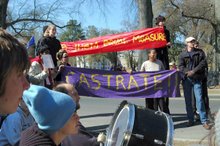


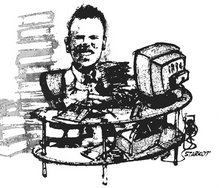
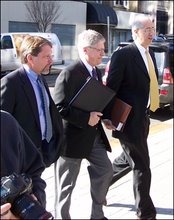
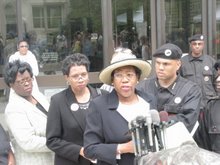
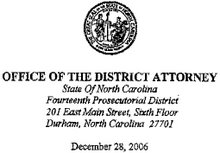
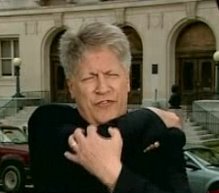


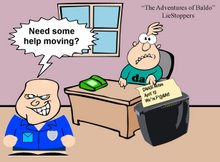







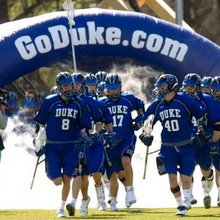

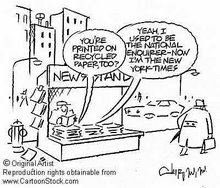
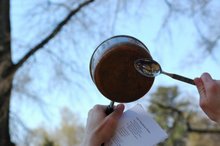
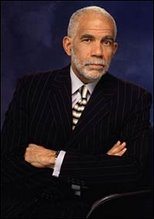


12 comments:
Finally a Durham Official asking some hard questions!
Members of the DPD should be charged criminally for the role they played in this hoax. They blatantly broke laws in order to frame the Duke kids.
Bottom line... the DPD is well known for being a Mickey Mouse PD.
My question for the council member: Why did it take so long for members of the city government to ask these questions? It has been obvious from early on in the "case" that there were problems with the investigation. Where were you then? Were you asking questions behind the scenes? What are you planning on doing to improve the process in the future? (I would suggest not hiring Hodges as the next Chief of Police, as he is apparently part of the current problem.)
DukieInKansas
I would first take away from City Manager Baker the power to chose a new police Chief! Deputy Chief Hodge should be fired, not promoted!
BTW while you are at it fire Baker too! The Triangle once had a great reputation, but now Durham has become a nationwide laughing stock and synonymous for its DA & Police corruption.
Sgt G and Himan must be looking forward to testifying at Nifong's hearing with Meehan.
By now they can read the writing on the wall.
These are good questions. Even if they are late, at least someone in Durham is asking them, and will not be quiet.
Brown's comprehensive questions are indeed excellent, but long overdue. At least two key questions remain, however. Exactly what was the grand jury told? And, why, if the DPD and DA truly believed there had been a rape, was there no attempt to match the DNA actually found on the accuser to other suspects?
Carolyn says:
I am astounded and impressed by City Councilman Eugene Brown's questions.
But that brings up my own question. How on earth did someone as honest and intelligent as him get elected in Durham?
Kudos to Councilman Brown. Why he even sounds like a Blog Hooligan!
Meeham never mentioned Gottleib and Himan in the frame. Although, they rode together to the lab, I would be shocked if Nifong and Meedham talked about conspiracy, in front of the cops.
To: Eugene A. Brown, Durham City Council
From Baldo
Nice list of questions. Now how about getting a panel member who isn't afraid to speak out against the establishment.
I nominate Beth Brewer! Durham's Own Hero of the Hoax who took on Nifong when everyone else cowered!
6:13, I'm shocked that you're unable to imagine that they'd do that. After all, it's not as though Himan or Gottlieb are exactly known for being ethical. If anything, they may have encouraged it, based on what we know about them regarding this case.
Post a Comment